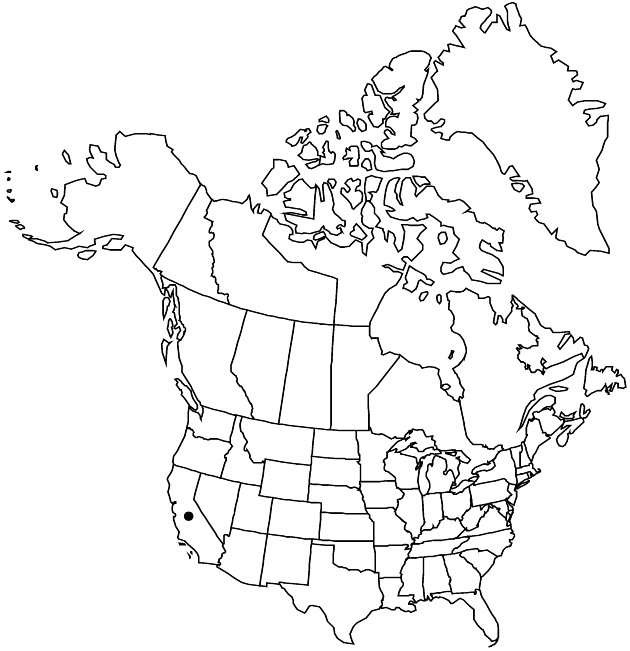Difference between revisions of "Deinandra conjugens"
Novon 9: 468. 1999.
FNA>Volume Importer |
imported>Volume Importer |
||
| (6 intermediate revisions by 2 users not shown) | |||
| Line 7: | Line 7: | ||
|year=1999 | |year=1999 | ||
}} | }} | ||
| − | |basionyms={{Treatment/ID/ | + | |special_status={{Treatment/ID/Special_status |
| + | |code=C | ||
| + | |label=Conservation concern | ||
| + | }} | ||
| + | |basionyms={{Treatment/ID/Basionym | ||
|name=Hemizonia conjugens | |name=Hemizonia conjugens | ||
|authority=D. D. Keck | |authority=D. D. Keck | ||
| + | |rank=species | ||
| + | |publication_title=Aliso | ||
| + | |publication_place=4: 109. 1958 | ||
}} | }} | ||
|synonyms= | |synonyms= | ||
| Line 27: | Line 34: | ||
|distribution=Calif.;Mexico (Baja California). | |distribution=Calif.;Mexico (Baja California). | ||
|discussion=<p>Of conservation concern.</p><!-- | |discussion=<p>Of conservation concern.</p><!-- | ||
| − | --><p>Deinandra conjugens is known from the inner South Coast and in southwestern foothills of the Peninsular Ranges, near San Diego.</p> | + | --><p><i>Deinandra conjugens</i> is known from the inner South Coast and in southwestern foothills of the Peninsular Ranges, near San Diego.</p> |
|tables= | |tables= | ||
|references= | |references= | ||
| Line 36: | Line 43: | ||
-->{{#Taxon: | -->{{#Taxon: | ||
name=Deinandra conjugens | name=Deinandra conjugens | ||
| − | |||
|authority=(D. D. Keck) B. G. Baldwin | |authority=(D. D. Keck) B. G. Baldwin | ||
|rank=species | |rank=species | ||
| Line 50: | Line 56: | ||
|publication title=Novon | |publication title=Novon | ||
|publication year=1999 | |publication year=1999 | ||
| − | |special status= | + | |special status=Conservation concern |
| − | |source xml=https:// | + | |source xml=https://bitbucket.org/aafc-mbb/fna-data-curation/src/2e0870ddd59836b60bcf96646a41e87ea5a5943a/coarse_grained_fna_xml/V19-20-21/V21_686.xml |
|tribe=Asteraceae tribe Heliantheae | |tribe=Asteraceae tribe Heliantheae | ||
|subtribe=Asteraceae (tribe Heliantheae) subtribe Madiinae | |subtribe=Asteraceae (tribe Heliantheae) subtribe Madiinae | ||
Latest revision as of 20:13, 5 November 2020
Annuals, 10–50 cm. Stems ± solid. Leaves: proximal blades pinnatifid to toothed, faces ± hirsute. Heads in glomerules or well separated, in paniculiform arrays. Bracts subtending heads usually overlapping proximal 0–1/2+ of each involucre. Phyllaries ± sessile- and stipitate-glandular, mostly near proximal margins and on apices, sometimes with non-glandular, non-pustule-based hairs as well. Paleae in 1 series. Ray florets 7–10; laminae deep yellow, 3–6 mm. Disc florets 13–21, all or mostly functionally staminate; anthers reddish to dark purple. Pappi of 6–9 scales 0.5–1 mm. 2n = 24.
Phenology: Flowering Apr–Jun.
Habitat: Grasslands, openings in coastal scrub, disturbed sites, clayey soils
Elevation: 20–300 m
Distribution

Calif., Mexico (Baja California).
Discussion
Of conservation concern.
Deinandra conjugens is known from the inner South Coast and in southwestern foothills of the Peninsular Ranges, near San Diego.
Selected References
None.